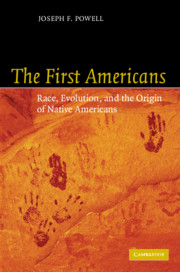Prologue: The Kennewick controversy
Published online by Cambridge University Press: 21 August 2009
Summary
As the curator of biological anthropology at the Maxwell Museum, I often passed through the exhibits in the biological anthropology area, on my way to the Museum office. One day, I encountered a group of second graders examining the displays of fossil hominids. I noticed that one group of kids was gathered around a display, a reproduction of a 17,000-year-old human burial from a Pleistocene site in France. Our replica had been arranged in the exact state of repose that the original skeleton held for nearly 18,000 years: legs and arms flexed as if asleep, and surrounded by grave goods, including stone tools and shell beads from a necklace. I approached the kids and asked what they could tell about this person. Most smiled and shrugged.
“He's dead,” one boy said in a flat voice.
I asked, “Are you sure it's a ‘he’?” after the giggles died down.
“How can you tell?” another kid looked to me and asked.
That was my opening to explain the differences in male and female skeletal anatomy and show them the features used to determine sex from a skeleton. Several hands went up, and I called on a girl who seemed particularly interested in the burial display.
“What was her name?” the girl asked.
“We don't know – we can't tell that from the bones,” I said.
- Type
- Chapter
- Information
- The First AmericansRace, Evolution and the Origin of Native Americans, pp. 1 - 14Publisher: Cambridge University PressPrint publication year: 2005



